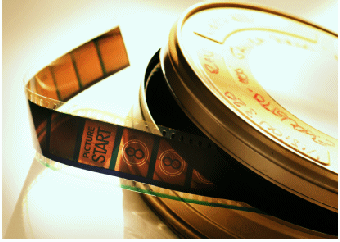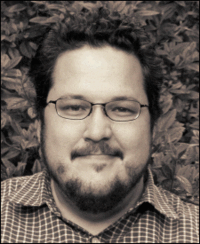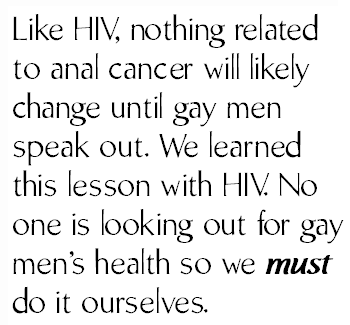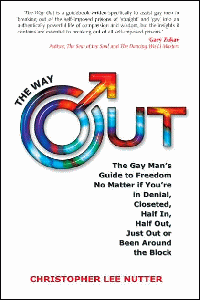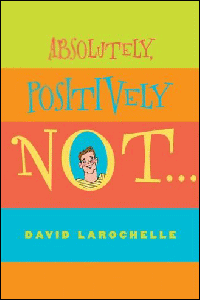Wish Upon a Star
By James Van Buskirk
I don’t remember exactly how old I was when my father gave me a little plastic Jiminy Cricket mini-puppet, only that I was too old to play with such a silly toy. Another inappropriate gift, I thought, in a series of paternal offerings that continually failed to acknowledge who I really was. But I couldn’t help myself. Again and again I absent-mindedly punched the base of the puppet’s plastic platform to watch the limbs of the dapper cricket collapse and then realign. For some reason I kept the toy. My identification with the character seemed to symbolize something.
Perhaps I remembered that Jiminy Cricket had been assigned by the Blue Fairy to be the conscience of Pinocchio, at least in the Walt Disney version of the story. In that animated film, the cricket, who had lived in the wood carver’s house for over 100 years, accompanies Pinocchio through his journey to the discovery of the values that allow him to become a real boy. I guess I’d conveniently forgotten, as Disney seemed to have, that early in the original Carlo Collodi story, Pinocchio smashes the nameless insect against the wall, and that is the end of the character.
As a kid in the pastel, post-war suburb of Buena Park, a few miles from Disneyland, I felt estranged not only from my own family, but also from the neighborhood kids and from my schoolmates. My alienation propelled me to escape into a world of books and movies. As a boy I was different, and even though I didn’t yet know that that difference meant Gay, I knew to keep my heart’s desires carefully hidden. I took the lyrics of Jiminy Cricket’s song to heart, dreaming that he was singing his words of wisdom to me. “When you wish upon a star, makes no difference who you are, anything your heart desires, will come to you. If your heart is in your dreams, no request is too extreme.”
Pinocchio was not the only film that starred Jiminy Cricket. He appeared in a fire prevention film that I was forced to sit through annually in the cafetorium of Buena Terra Elementary School. After each safety instruction, he would dance and sing, “I’m no fool, nosiree, I’m gonna live to be a seventy three, “and then”…eighty three,” until finally “a hundred and three!” I may have rolled my eyes, but this odd creature and his worldly advice stuck in my psyche. His morning coat, top hat and spats represented sophistication and self-possession. I wanted to be just like him.
Later, listening to songs from the Pinocchio soundtrack album I recognized Jiminy’s voice as that of Cliff Edwards. Known as “Ukulele Ike,” Edwards was a British vaudevillian who from 1929 to 1968 worked on stage, screen and as a singer. I was fascinated that in 1933, seven years before Pinocchio, he had recorded a novelty number called “Come Up and See Me Sometime.” Its suggestive lyrics and campy delivery à la Mae West made me wonder if Cliff Edwards might have been Gay. This thought was encouraged by the fey portrait of him in a book of character actors I once found, despite the fact that he was listed as being twice divorced.
Edwards, it turns out, is buried at Valhalla Memorial Park in Burbank, near the Disney studios, a fact I uncovered on my last trip there to visit my grandmother’s grave. This odd coincidence also made me realize that my father’s name, Edward Riley, and my name, James Edward, together makes us “Edwards.”
When I became lovers with Rob, he willingly played Pinocchio to my Jiminy Cricket. During a visit to Los Angeles, where I was born, we stumbled into “Fantasies Come True,” a shop of Disney collectibles on Melrose Avenue. This mini-museum of Disneyana was familiar from my many visits to the amusement park. Each birthday my brother and I had been offered the choice of a party or a trip to Disneyland. We negotiated so that one of us would choose the party and the other the trip, thus always ensuring at least one annual visit to the Magic Kingdom. Each visit concluded with a trip to the emporium on Main Street where we got to select a small souvenir from among the many Disney tchotchkes.
Here on Melrose, there were Mickeys and Donalds and Sleeping Beauties and Cinderellas. Far fewer were the Jiminies and Pinocchios from which Rob and I purchased appropriate presents for each other. Over the years I collected a placemat, a candle, two music boxes, a plush toy. I had top-hatted crickets of glass, plastic, lead, metal, ceramic. Friends continue to feed my fixation by offering Jiminy cards and gifts.
One Halloween Rob and I made quite a pair as Pinocchio and Jiminy: In a feathered cap, short pants, big bow tie and vest, Rob carried books and an apple. A long plastic nose completed his elfin look. As his loyal conscience, my spats, umbrella, and top hat set off my green-tinted skin. Somewhere a Polaroid photograph preserves the memory of our costumes’ success.
After years of unconsciously assembling these disparate pieces of a puzzle, I noticed several queer artists also deconstructing the Pinocchio story. What is it about this tale that Gay men relate to? Is it the sense that because we feel we are not “real” boys, we are willing to do anything to become real? I tried to apply Jungian archetypes to the story’s characters but got bogged down trying to distinguish the hero from the trickster from the shadow self. Perhaps Jiminy Cricket was a surrogate parent who provided moral guidance, as the Blue Fairy asked him to, but his message was: “Woe to those who revolt against their parents and run away from home. Sooner or later they will repent bitterly.”
My experience has been just the opposite. Over twenty-five years ago I put my heart in my dreams by moving to San Francisco and coming out as a Gay man. Although I physically “ran away” from home many years ago, I am still trying to psychically escape those internalized messages. I spent much of my life trying to be a “good” boy, maintaining the myths of the family, denying my feelings. Revolting against my parents has had a surprisingly profound liberating effect on me. Rather than repenting bitterly, I wish I’d had the courage to do this long ago. It was only after decoding the messages of my family during years of therapy that I have started becoming a “real” boy.
Now, my father has died, Rob and I are no longer lovers. My Jiminy Cricket puppet sits atop my desk reminding me of the wish upon a star. Suddenly I realize it wasn’t that I wanted to be Jiminy Cricket; I wanted Jiminy Cricket. I wanted someone to support and guide and love the real boy that was me. Slowly it dawns on me, my wish is coming true.
This is just an excerpt from this issue of White Crane. We are a reader-supported journal and need you to subscribe to keep this conversation going. So to read more from this wonderful issue SUBSCRIBE to White Crane. Thanks!
Jim Van Buskirk is the Program Director of the James C. Hormel Gay & Lesbian Center of the San Francisco Public Library. This is his first contribution to White Crane. He can be reached at jvanbuskirk@sfpl.org
